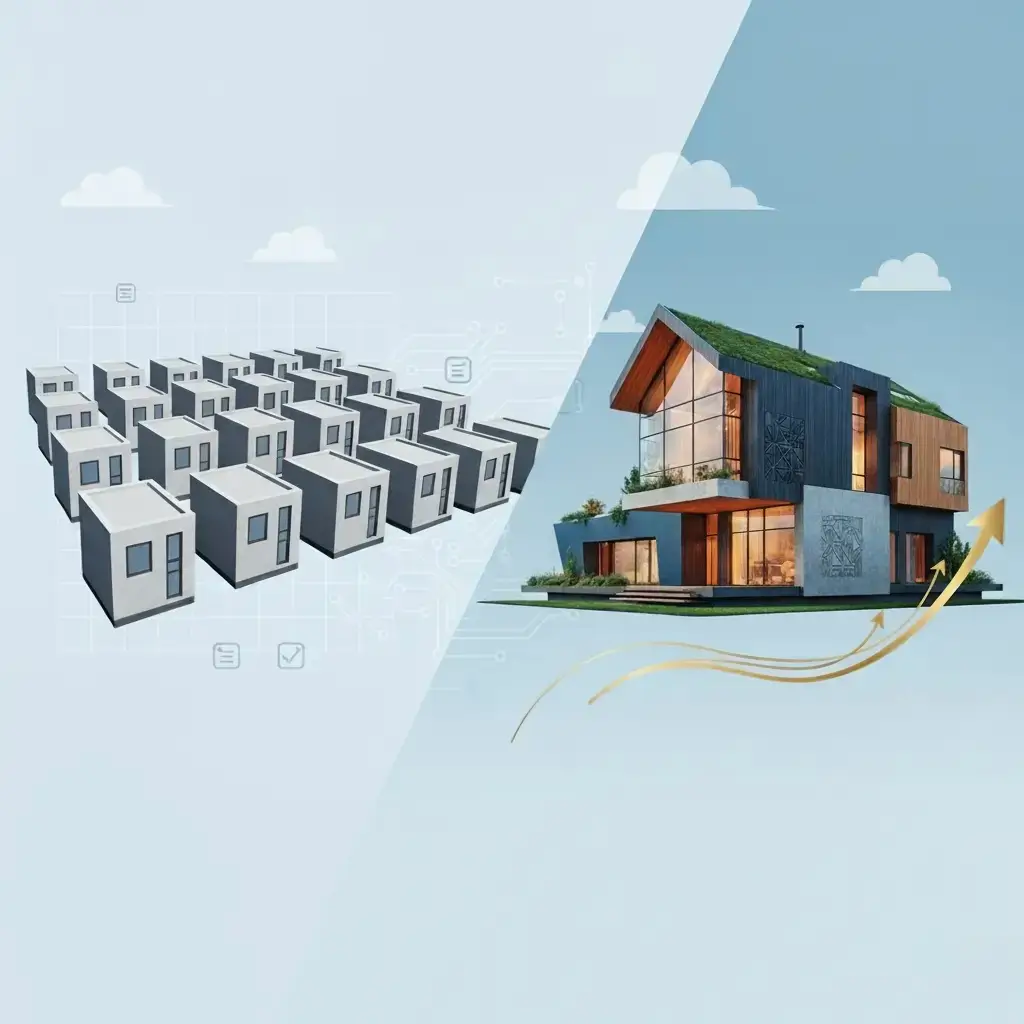Imagine you’ve decided to build a house for your family or business. You have two paths. The first is to buy a ready-made template project in a cottage community. It’s fast, relatively inexpensive, and you see the result immediately. But the layout is standard, the materials are basic, and all the houses on the street look the same. The second path is to hire an architect and builders to construct a house from scratch according to your own design. It’s longer and more expensive, but every room, every material, and every detail will meet your specific needs and tastes.
Choosing a website for your business is the same as choosing a house. A template is a template project. Custom development is a custom-built house. Let’s figure out which one is right for your foundation on the internet.
The Illusion of Savings: What is a Template Site?
A ready-made solution (template) on platforms like WordPress, Tilda, or Wix is appealing for its apparent simplicity and low starting price. It seems like all you need to do is choose a beautiful “facade,” arrange your “furniture” (content), and your digital home is ready to receive guests.
This is a really good option if you need to quickly launch a “summer cottage” to test a hypothesis, a site for a short-term event, or if you have a small local business with very simple tasks.
But as soon as you want to build something serious, you’ll run into the limitations of a template project:
-
Rigid Framework. You can’t move a load-bearing wall or add a panoramic window where it wasn’t in the project. You adapt your business process to the template’s capabilities, not the other way around. Want to add a complex calculator or a unique booking system? You’ll have to make do with “extensions” in the form of plugins, which don’t always fit into the overall structure.
-
Unreliable Add-ons. Every new plugin (for SEO, security, forms) is a third-party module that you attach to your house. They increase the load on the “foundation” (slow down the site), can conflict with each other after updates, and create holes in the “walls” (security). As a result, your house becomes a jumble of extensions that constantly need repairs.
-
All Houses Look the Same. Thousands of companies use the same template project as you. Your site loses its architectural individuality and doesn’t reflect the uniqueness of your brand.
-
Hidden Costs. The basic “frame” of the house may be cheap. But for a quality “roof” (a good plugin), reliable “utilities” (security), and beautiful “finishing” (premium features), you have to pay, often on a subscription basis.
Analogy: A template house is good as temporary housing or a summer cottage. But you wouldn’t build your family’s future in it and pass it down through generations, would you?
An Investment in Growth: What is Custom Development?
Custom development is when a site is created from scratch according to a unique architectural project, specifically for the foundation of your business.
-
Thought-out Layout. The site is initially designed around your business processes. Every “room” (section) and every “door” (button) is exactly where your customers need them. The site works for you, not you trying to fit into its framework.
-
A Solid Foundation for Growth. Your business grows, and the site grows with it. The foundation is initially laid with the expectation that you can add a second floor (a new section) or a garage (complex functionality) without fear of the whole structure collapsing.
-
Reliability and Efficiency. No extra corridors or unused rooms. The code only contains the functions you need, so the site works quickly and stably. And speed and reliability directly affect customer trust and search engine rankings.
-
Unique Architectural Style. The design and logic of the site are an extension of your brand. Your “house” looks and feels unique, setting you apart from the template-built competition.
Analogy: This is the house built to your design. It costs more at the start, but it will serve for decades, perfectly suit your lifestyle, and only increase in value as a valuable asset over time.
So What Should You Choose?
The choice depends on your goal.
A template is a prefabricated module. A quick, cheap way to check if you need a cottage in this area, or to meet a temporary need.
Custom development is capital construction. It’s a strategic investment in your main digital asset that will bring you profit for years to come.
If you are building a business seriously and for the long term, your site should be a solid foundation, not a temporary structure that requires constant repairs.
